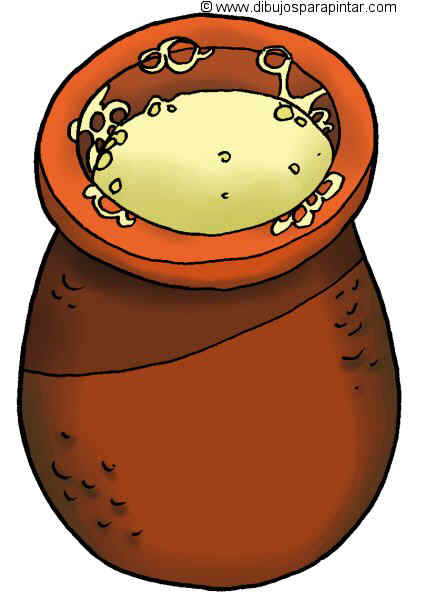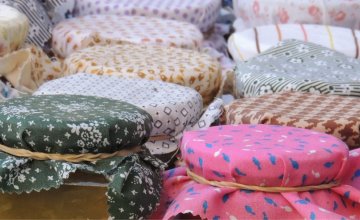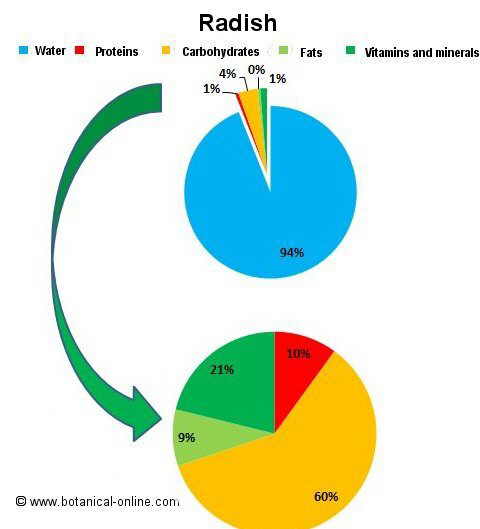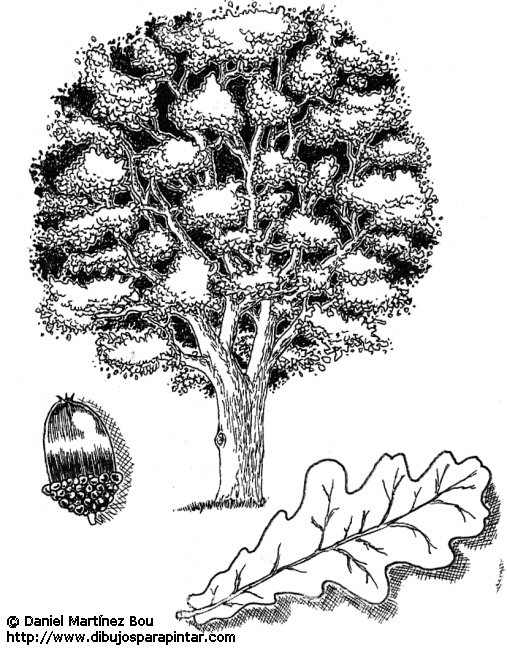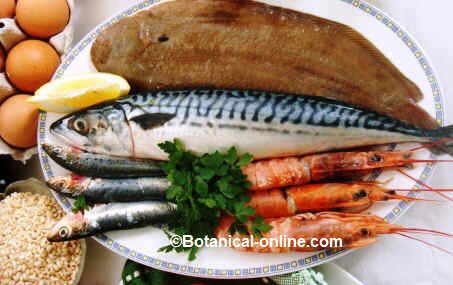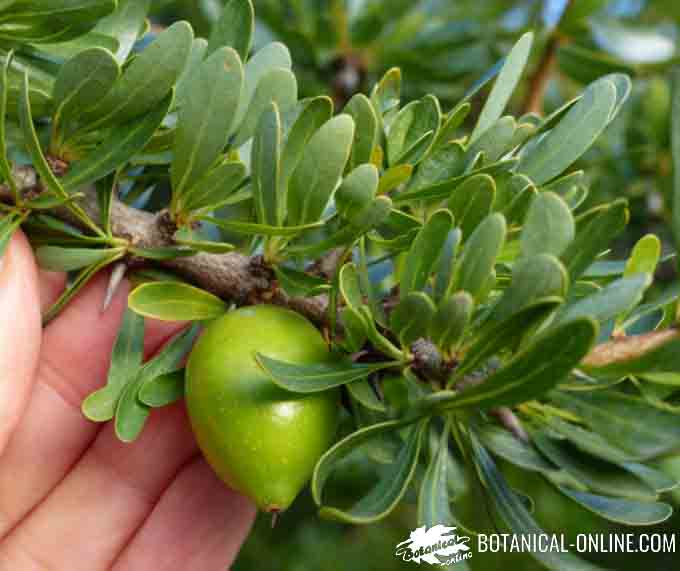Contents
- 1 What is a pistachio tree?
- 1.1 CHARACTERISTICS OF PISTACHIO
- 1.2 History and origin of pistachios
- 1.3 Habitat. What climate do pistachios need?
- 1.4 Description of pistachio tree
- 1.5 How are pistachio leaves like?
- 1.6 Characteristics of pistachio flowers
- 1.7 Characteristics of pistachio fruits
- 1.8 How to reproduce and take care of pistachios
- 1.9 Pistachio harvest
- 1.10 How to gather pistachio fruits
What is a pistachio tree?
CHARACTERISTICS OF PISTACHIO
English common name: Pistachio, pistacio nut.
Scientific name: Pistacia vera L.
Etymology: Pistacia comes from latin “pistacium”, that comes from Greek “pistakion”, that comes from Persian “pistah”
* See: Pistachio in other languages
Family: Anacardiaceae
History and origin of pistachios
Pistachio is found in areas of the Mediterranean and Middle East, including Turkey and in ancient Persia (currently Iran) for thousands of years before Christ. In these areas, the fruits of pistachio were harvested by hand, whereas in areas of the US and California, its cultivation did not extend till the 70 when specialized machinery for its collection was used to make this work much easier to obtain.
Either manually or with specialized machinery, today Turkey and California are the two major producers and exporters of pistachios. (In Iran cultivation disappeared for years, because of the war in 1979.)
In other areas it also appears with a lesser intensity and amount, such as in India, Syria, Lebanon, Spain, Italy, Greece, Australia, etc.
Currently the Iranian pistachio is considered the most exquisite, closely followed those produced by Greece and Turkey. Pistachios are coming from Tunisia, Sicily and parts of east of Spain.
Habitat. What climate do pistachios need?
Pistachio needs a hot, dry, desert or semi-desert climate with warm summers for the fruit to mature properly, tolerates up to 40 degrees Celsius. But it also requires a period of more than 600 hours of cold in winter, tolerating temperatures down to -18 degrees.
It can resist the wind, but it does not stand too much rain. Frost can lead to empty fruit if it takes place in spring, when the fruit is shaped.
It does not tolerate very wet climates with waterlogged soils, where it tends to rot. Instead in dry climates where it does not rain over relatively long periods of time can perfectly live.
They are highly appreciated because they accept a quite wide range of soil PH, especially alkaline soils.
Description of pistachio tree
Pistachio (Pistacia vera) is a tree of slow growth and maturation as it will not bear fruit until after a decade of being planted. But it can have a productive life of more than 700 years.
It does not exceed 10 meters high, so it is considered a small or medium tree.
It is a dioecious tree, that is to say, there are male trees and female trees. Female trees are smaller than male. A male tree and another female one is required for fertilization.
Pistachio has got a rugged stem, that can be either single or multiple, with many very long branches that form a wide crown. Branches vary in color depending on their age. Young branches show a deep orange-red color, while those who are not so young, are duller and darker brown.
How are pistachio leaves like?
It has composite leaves, formed by more than 3 leaflets. They are large and oval, with a rough texture and very deep green color above and lighter green below.
Pistacia vera is a deciduous tree, that is to say, its leaves fall from the tree in order to avoid unnecessary expenditure of nutrients during the wintertime, but after this dormant period, it will grow back again. This happens once a year, usually in periods of low light and low temperatures, as it is more difficult to obtain nutrients.
Characteristics of pistachio flowers
Although pistachio flowers appear in large numbers, still closed inside the buds long before the leaves, they do not bloom until summer. Flowers are small and they do not have petals. With a green color with brown tones, they are distributed in panicles.
Male flower anthers show a very intense yellow color, since they contain abundant pollen. Female plants appear with red stigmata
Female and male flowers have a different ripening period. Male tree pollen must match with other mature and receptive flowers from a female tree to fertilize them and lead to fruits. For this reason, a male tree is planted for every eight or ten female trees, surrounding it.
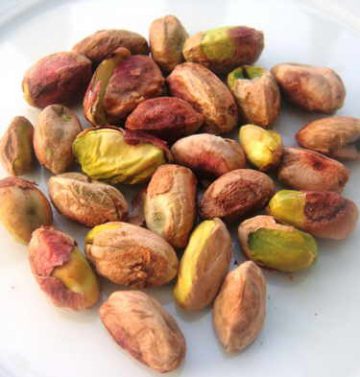
It is recommended to plant different varieties, since pollination period will also vary, so they are more likely to match each other. Pollination is done by wind, as bees are attracted only by male flowers.
Flowers, once they have been mated, secrete a substance that prevents other close flowers to be pollinated.
Characteristics of pistachio fruits
When we refer to pistachios, we mean the fruit of the pistachio tree. They are edible nuts.
Pistaccio trees are biennials, so they alternate a big production of fruits one year and a small production, or even no production at all, in the following year.
Pistachio fruits are drupes . Their skin is yellow, but they become reddish if they are given intense sun. It has a small, thin fleshy green layer, which protects the shell.
The shell is responsible for protecting the fruit. It is light beige, very hard and durable, but, when the fruit is ripe, it opens in half, leaving part of the fleshy inside content.
Pistachio seeds are between one and two centimeters long by one wide. They are covered by a very thin brown skin with reddish tones. They have oval shape and are pointed at one end. The fleshy part is very deep green. This is the edible part of the fruit, which represents the 30% of the whole fruit weight.
Pistachio fruit has got a delicious flavor and a crisp texture.
How to reproduce and take care of pistachios
Pistachio trees can usually be reproduced by graft, mainly T-shaped. This is a very complicated t technique, reason why, it is generally also grown by seeding.
Young trees should be planted maintaining a space between 5-10 meters. They should be planted very carefully, because of its fragility and to avoid damaging the roots. They will be monitored to see how they grow.
Pistachios must also be pruned, not only to give them the desired shape, but in order to produce more branches leading to more quantity of fruits. If we make excessive pruning, we will get less fruits.
It is preferable to sow the seeds in a fresh state without the shell. They germinate 20 days and should be transplanted in larger pots. You can also opt for a graft, but it is very difficult and complicated.
Pistachio harvest
Pistachio is a tree that takes more than 5 years to bear fruit and that does not reach its maximum production when being 10 to 15 years old. The good news is that this tree will be productive for about 60 years, once it has started to bear fruit successfully.
Typically, a pistachio generates an average of about 5 kg. of shelled fruit a year. But, as the tree grows and becomes an adult, it can produce up to 16 kg. of shelled pistachios.
It can occur that the fruit becomes empty inside being only shell. This happens when an “abortion” occurs at fertilization of the flower. Good and bad fruits can be easily separated by density difference (floating method).
It takes about two and a half months between the pollination phase and the stage where the fruit has reached the right size. But another month and a half is required for maturation and collection, either manually or mechanically.
How to gather pistachio fruits
Simply move the tree to easily detach those fruits that have reached their peak of ripeness and are ready to be collected. It is known to have reached that point, because the shell of the fruits is half opened and the intense green color of the seeds can be seen inside.
They are usually collected just before full maturity in order to prevent pests that can damage the fruit, so taste it is not the best, but the fruit is in good condition.
Once collected, proceed to withdraw the layer of the shell. This process must be done before the course of a day, after collection, to minimize the stains that may appear and spoil the product. But it is not the only, nor the most important reason.
The reason why this layer must be removed quickly is to prevent the proliferation and development of fungi that produce toxins, specifically mycotoxins such as aflatoxins, which are not only harmful because they are toxic, but they can even lead to death.
![]() More information on pistachios.
More information on pistachios.


